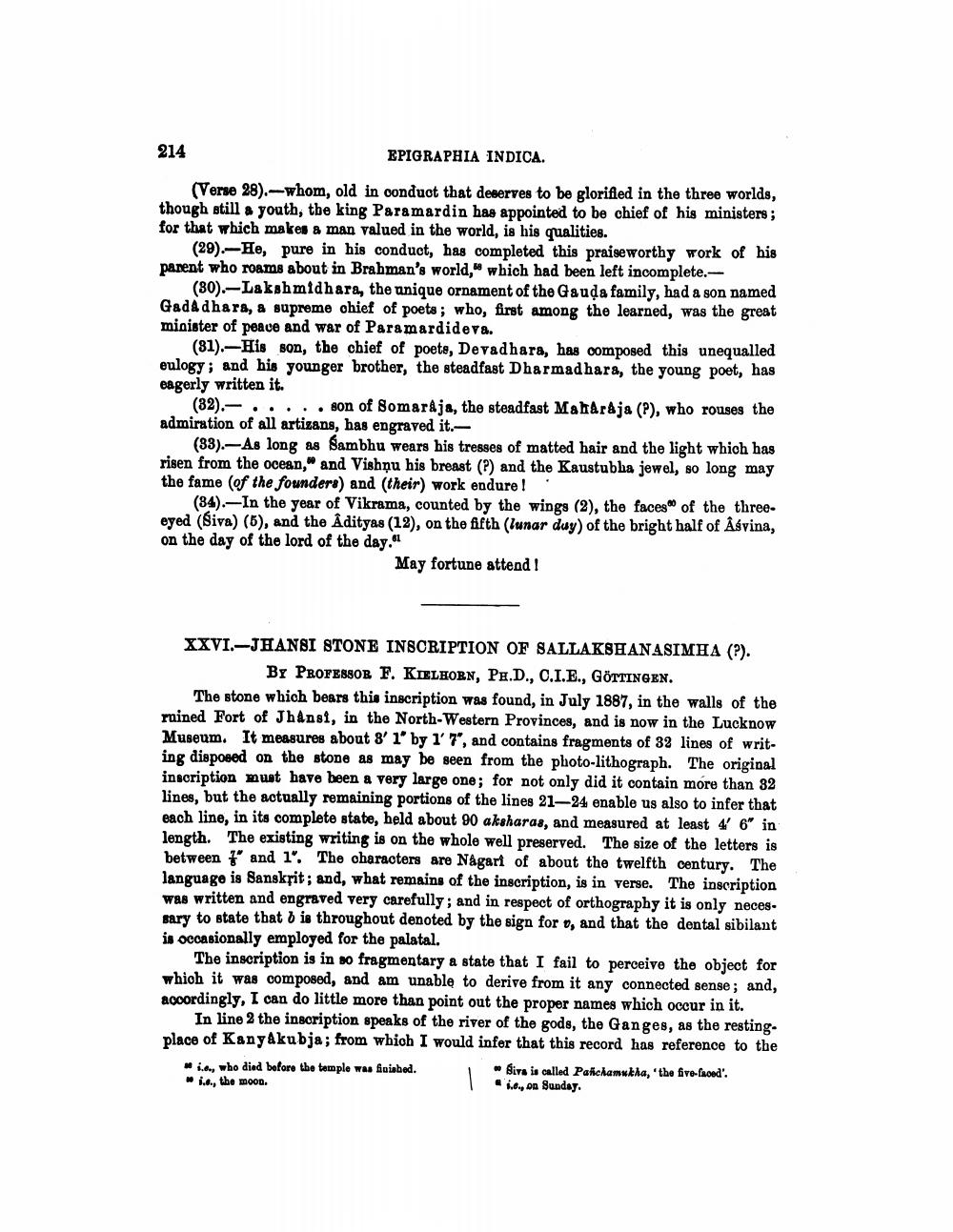________________
214
EPIGRAPHIA INDICA.
(Verse 28).-whom, old in conduct that deserves to be glorified in the three worlds, though still a youth, the king Paramardin has appointed to be chief of his ministers; for that which makes a man valued in the world, is his qualities.
(29)-He, pure in his conduct, has completed this praiseworthy work of his parent who roams about in Brahman's world," which had been left incomplete.
(80).-Lakshmidhara, the unique ornament of the Gauda family, had a son named Gadadhara, a supreme chief of poets; who, first among the learned, was the great minister of peace and war of Paramardideva.
(81). His son, the chief of poets, Devadhara, has composed this unequalled eulogy; and his younger brother, the steadfast Dharmadhara, the young poet, has eagerly written it.
(32).-.
son of Somaraja, the steadfast Maharaja (P), who rouses the admiration of all artizans, has engraved it.
(33). As long as Sambhu wears his tresses of matted hair and the light which has risen from the ocean," and Vishnu his breast (?) and the Kaustubha jewel, so long may the fame (of the founders) and (their) work endure!
(34). In the year of Vikrama, counted by the wings (2), the faces of the threeeyed (Siva) (5), and the Adityas (12), on the fifth (lunar day) of the bright half of Âśvina, on the day of the lord of the day."
May fortune attend!
XXVI.-JHANSI STONE INSCRIPTION OF SALLAKSHANASIMHA (?). BY PROFESSOR F. KIELHORN, PH.D., C.I.E., GÖTTINGEN.
The stone which bears this inscription was found, in July 1887, in the walls of the rained Fort of Jhansi, in the North-Western Provinces, and is now in the Lucknow Museum. It measures about 8' 1" by 1' 7", and contains fragments of 32 lines of writing disposed on the stone as may be seen from the photo-lithograph. The original inscription must have been a very large one; for not only did it contain more than 32 lines, but the actually remaining portions of the lines 21-24 enable us also to infer that each line, in its complete state, held about 90 aksharas, and measured at least 4' 6" in length. The existing writing is on the whole well preserved. The size of the letters is between and 1". The characters are Någari of about the twelfth century. The language is Sanskrit; and, what remains of the inscription, is in verse. The inscription was written and engraved very carefully; and in respect of orthography it is only neces sary to state that is throughout denoted by the sign for v, and that the dental sibilant is occasionally employed for the palatal.
The inscription is in so fragmentary a state that I fail to perceive the object for which it was composed, and am unable to derive from it any connected sense; and, accordingly, I can do little more than point out the proper names which occur in it.
In line 2 the inscription speaks of the river of the gods, the Ganges, as the restingplace of Kanyakubja; from which I would infer that this record has reference to the
1
sei.e., who died before the temple was finished. i.e., the moon.
"Siva is called Panchamukha, 'the five-faced". i.., on Sunday.




